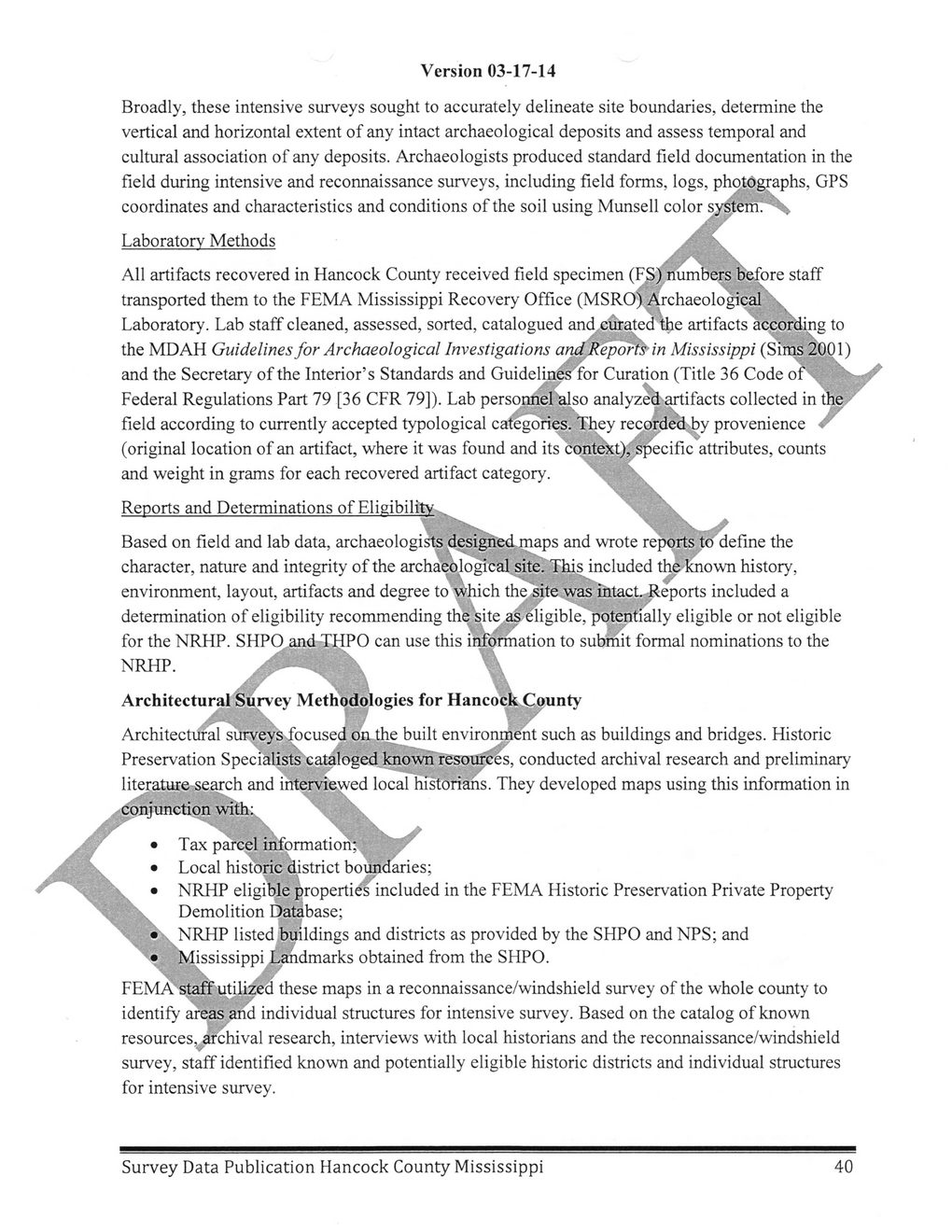This text was obtained via automated optical character recognition.
It has not been edited and may therefore contain several errors.
Version 03-17-14 Broadly, these intensive surveys sought to accurately delineate site boundaries, determine the vertical and horizontal extent of any intact archaeological deposits and assess temporal and cultural association of any deposits. Archaeologists produced standard field documentation in the field during intensive and reconnaissance surveys, including field forms, logs, photographs, GPS coordinates and characteristics and conditions of the soil using Munsell color system: v ; Laboratory Methods •' \ ' ' s \ \ All artifacts recovered in Hancock County received field specimen (FS) numbers Before staff transported them to the FEMA Mississippi Recovery Office (MSRO) Archaeological \ Laboratory. Lab staff cleaned, assessed, sorted, catalogued and curated the artifacts according to the MDAH Guidelines for Archaeological Investigations and Reports in Mississippi (Sims 2001) and the Secretary of the Interior’s Standards and Guidelines for Curation (Title 36 Code of x -. Federal Regulations Part 79 [36 CFR 79]). Lab personnel'also analyzed artifacts collected in the • ” S. • ' ‘ e field according to currently accepted typological categories. They recorded by provenience , (original location of an artifact, where it was found and its context),^S^ecific attributes, counts and weight in grams for each recovered artifact category. '\ \ Reports and Determinations of Eligibility ^ \ V \ v. / Based on field and lab data, archaeologists designed maps and wrote reports to'define the character, nature and integrity of the archaeological site. This included the-known history, environment, layout, artifacts and degree to which the site was mtact. Reports included a determination of eligibility recommending the site as eligible, potentially eligible or not eligible for the NRHP. SHPO and THPO can use this information to submit formal nominations to the NRHP. - ’ \ Architectural Survey Methodologies for Hancock County Architectural surveys focused on the built environment such as buildings and bridges. Historic Preservation Specialists cataloged known resources, conducted archival research and preliminary literature search and interviewed local historians. They developed maps using this information in conjunction with: • Tax parcel information; • Local historic district boundaries; • NRHP eligible properties included in the FEMA Historic Preservation Private Property Demolition Database; • NRHP listed buildings and districts as provided by the SHPO and NPS; and • Mississippi Landmarks obtained from the SHPO. FEMA staff utilized these maps in a reconnaissance/windshield survey of the whole county to identify areas and individual structures for intensive survey. Based on the catalog of known resources, archival research, interviews with local historians and the reconnaissance/windshield survey, staff identified known and potentially eligible historic districts and individual structures for intensive survey. Survey Data Publication Hancock County Mississippi 40

Hancock County History and Archeology Survey-Publication-Data-2014-(43)